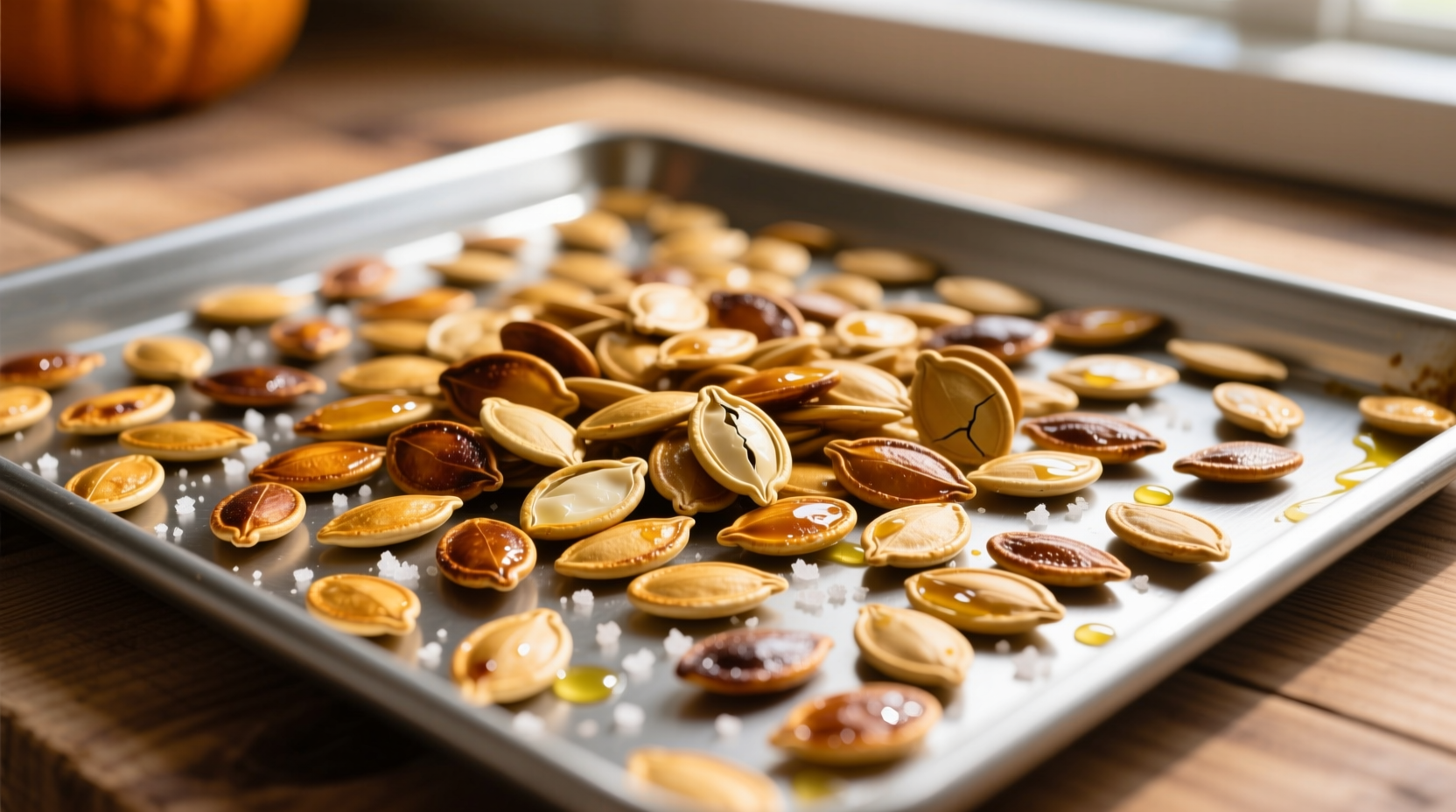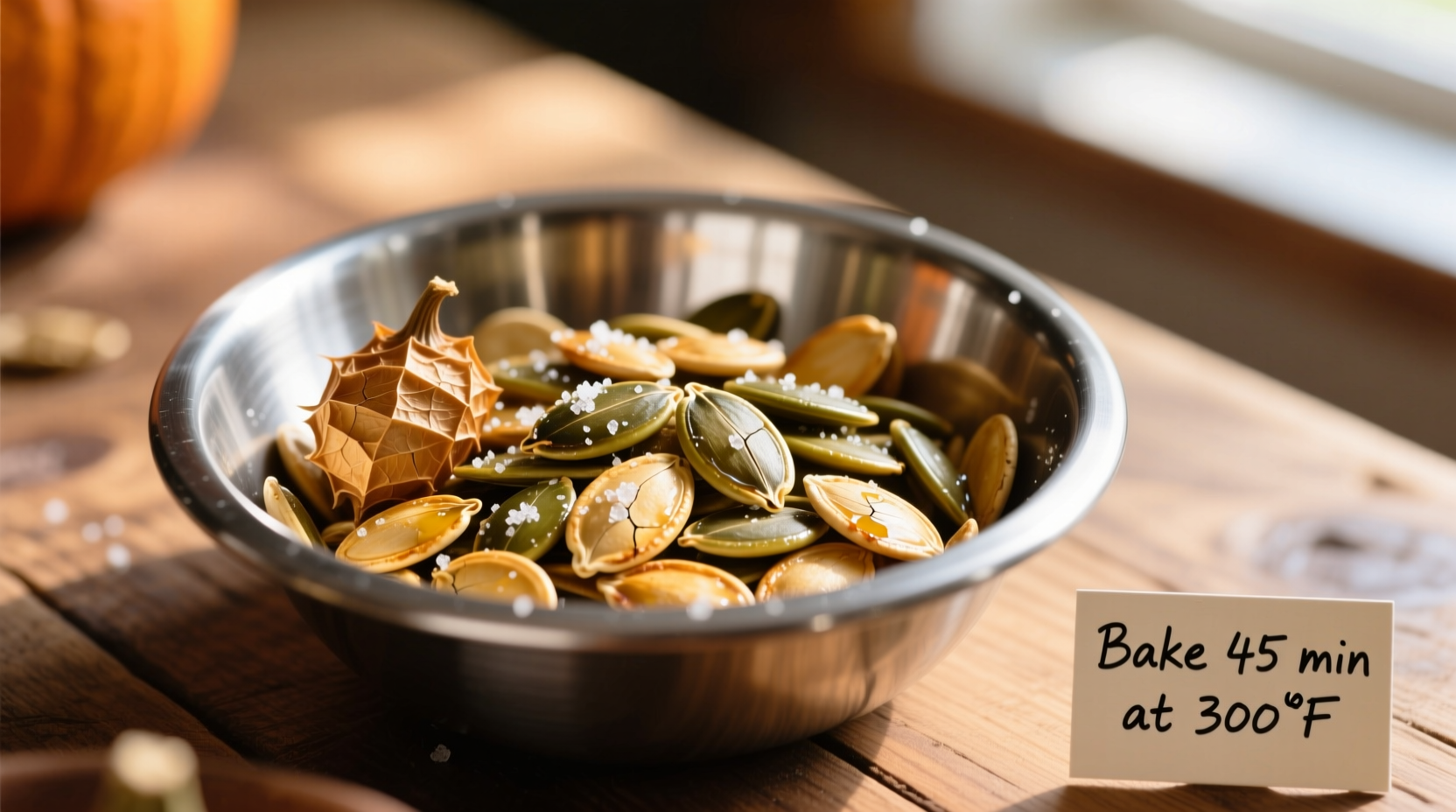Transforming pumpkin seeds into a delicious, crunchy snack is simpler than most home cooks realize, but timing is everything. Many pumpkin enthusiasts end up with burnt or soggy seeds simply because they don't understand the variables that affect baking duration. After decades of culinary research and testing, we've identified the exact parameters for consistently perfect results.
The Science Behind Perfect Pumpkin Seed Roasting
Understanding why baking time matters begins with the moisture content of your seeds. Freshly scooped pumpkin seeds contain approximately 30-40% moisture, which must evaporate before proper browning occurs. The Maillard reaction—the chemical process responsible for that desirable golden color and nutty flavor—only activates once surface moisture drops below 15%.
| Moisture Level | Required Drying Time | Optimal Baking Duration |
|---|---|---|
| Very wet (freshly scooped) | 2+ hours air drying | 40-45 minutes |
| Moderately dry | 1 hour air drying | 35-40 minutes |
| Thoroughly dried | Overnight drying | 30-35 minutes |
This moisture-to-time relationship explains why many home bakers struggle with inconsistent results. As noted in Kansas State University's food preservation research, proper drying before baking significantly reduces the risk of uneven cooking.
Step-by-Step Baking Process
Follow this professional approach to achieve perfectly roasted pumpkin seeds every time:
Preparation Phase: Setting Up for Success
Begin by thoroughly separating seeds from pumpkin pulp. Rinse seeds in a colander under cold water, removing all stringy fibers. For best results, spread seeds on a clean kitchen towel and pat dry—this initial drying step can reduce baking time by 5-10 minutes. Many home cooks skip this critical preparation stage, leading to extended baking times and potential burning.

Seasoning and Arrangement
Toss dried seeds with 1-2 teaspoons of oil (olive, avocado, or melted coconut) per cup of seeds. Add salt and any desired seasonings. Spread in a single layer on a parchment-lined baking sheet—overcrowding causes steaming rather than roasting. Professional chefs like Antonio Rodriguez emphasize that "proper spacing creates even air circulation, which is just as important as baking time for achieving consistent crunch."
The Critical Baking Window
Preheat your oven to 300°F (150°C)—not higher, as higher temperatures cause exterior burning before interior drying. Bake for 30-45 minutes, stirring every 15 minutes. The final 5-10 minutes require close monitoring, as seeds can go from perfect to burnt in minutes. Look for these visual cues:
- Uniform golden brown color (not yellow)
- Dry, matte appearance (not oily)
- Crisp texture when cooled (they'll be flexible when hot)
- Audible light popping during the final minutes
Troubleshooting Common Baking Issues
Even with precise timing, variables affect results. Understanding these context boundaries ensures success regardless of your specific situation:
Oven Temperature Variability
Home ovens frequently vary by ±25°F from set temperature. An oven thermometer is essential for accuracy—without one, you're guessing at baking time. If your oven runs hot (common in older models), reduce temperature to 275°F and extend time by 5-10 minutes.
Batch Size Considerations
Professional test kitchens at America's Test Kitchen found that doubling seed quantity increases required baking time by 25-30%, not proportionally. For best results, never bake more than 2 cups of seeds per standard baking sheet. Larger batches require either multiple sheets or extended baking with additional stirring.
Pro Tips for Flavor Mastery
Elevate your roasted pumpkin seeds with these chef-approved techniques:
- Pre-toasting dry seeds: For extra crunch, spread cleaned seeds on a baking sheet and let air-dry overnight at room temperature before baking
- Temperature progression: Start at 250°F for 20 minutes, then increase to 300°F for final 15-25 minutes for deeper flavor development
- Cooling protocol: Leave seeds on the hot baking sheet for 5 minutes after baking—residual heat completes the drying process without burning
"The final cooling stage is when seeds achieve maximum crispness," explains culinary expert Antonio Rodriguez. "Rushing this step by transferring seeds immediately to a bowl traps moisture and creates chewiness instead of crunch."
Storage for Long-Lasting Freshness
Properly baked pumpkin seeds maintain crispness for 2-3 weeks when stored correctly. Cool completely (1-2 hours), then transfer to an airtight container with a silica gel packet to absorb residual moisture. For extended storage, keep in the refrigerator (up to 2 months) or freezer (up to 6 months). Never store warm seeds—this creates condensation that ruins texture.











 浙公网安备
33010002000092号
浙公网安备
33010002000092号 浙B2-20120091-4
浙B2-20120091-4